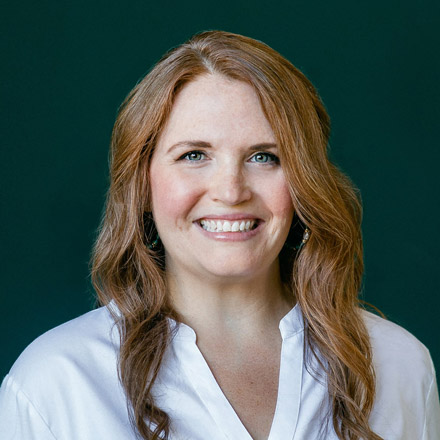What Makes a Hospital Baby-Friendly?
Babies and Bumps
March 03, 2024
When you’re pregnant, one of the most important decisions you’ll make is choosing where to give birth. You’ll likely consider a hospital birth, out-of-hospital birthing center, or maybe a home birth. While most people give birth in a hospital setting, a “subset” of Baby-Friendly hospitals has become increasingly popular and more common over the last several years. In this article, I’ll share an overview of what a Baby-Friendly hospital is and how it earns this designation, so you can decide whether it’s something that’s right for you.
Baby-Friendly hospitals adhere to the rigorous standards set forth by the World Health Organization (WHO) and the United Nations Children’s Fund (UNICEF) by prioritizing mother-baby bonding, breastfeeding support, and evidence-based practices that promote the health and well-being of both mom and baby. In the United States, Baby-Friendly USA, Inc. (BFUSA) is the accrediting body and national authority for this WHO/UNICEF initiative.
According to Baby-Friendly USA, in 2007, less than 3% of U.S. births occurred in approximately 60 Baby-Friendly designated facilities. By 2022, those numbers rose to 27% of births in approximately 600 Baby-Friendly facilities, and they continue to rise. Baby-Friendly hospitals and birthing centers can now be found in all 50 states!
So, why are Baby-Friendly hospitals becoming increasingly popular? Well, it’s because they recognize the importance of providing mothers and newborns with the best possible start in life. From the moment you step through the doors of a Baby-Friendly hospital, you’ll notice a warm and supportive atmosphere that’s tailored to meet your unique needs.
There are three fundamentals to the Baby-Friendly philosophy:
- Breastfeeding is the optimal way to nurture and nourish. There’s no denying the incredible benefits of breastfeeding for both you and your baby. It’s not just about providing nutrition; it’s a profound bond that fosters health and well-being. Countless studies have shown that breastfeeding leads to improved health outcomes and reduces the risk of certain diseases for both mom and baby. Baby-Friendly hospitals acknowledge this and do everything possible to support your breastfeeding journey.
- Every mother should be informed and her decisions should be respected. Whether you choose to breastfeed exclusively, supplement with formula, or opt for formula feeding, your decision should be respected and supported. Baby-Friendly hospitals understand that breastfeeding may not be possible for everyone or in every situation, and that’s okay. What matters most is that you feel empowered to make the choice that’s right for you and your baby, and that you receive the support and respect you deserve every step of the way.
- The moments and days immediately following birth should be protected as a time of bonding and support. In the past, organizational or external priorities unrelated to a mother and her baby often interfered with this time. Now, Baby-Friendly facilities are changing that. They provide a nurturing environment where evidence-based care is prioritized, education is unbiased, and all feeding options are respected.
In addition to the supportive environment and evidence-based practices offered by Baby-Friendly hospitals, there are many other benefits to consider. For example, these hospitals typically have lactation consultants on staff to provide breastfeeding support and guidance. They also promote rooming-in, which allows moms and babies to stay together 24/7, which facilitates bonding and early breastfeeding initiation.
Baby-Friendly hospitals are also committed to providing comprehensive postpartum care to ensure a smooth transition home for you and your little one. This includes education on newborn care, breastfeeding support, and guidance on postpartum recovery and self-care.
So, how do you find a Baby-Friendly hospital? The easiest way is to check Baby-Friendly USA’s online locator. Many hospitals also proudly display their Baby-Friendly designation, making it easy to identify them. And you can always ask your healthcare provider or do some research online to find a hospital that aligns with your preferences and values.
If you’re unable to find a Baby-Friendly hospital in your area, don’t worry! You can still work with your healthcare provider to create a more baby-friendly experience during your hospital stay. Here are some tips to help you make the most of your birthing experience:
- Open Communication: Talk to your healthcare provider about your desires and preferences for your birth experience. Whether you’re interested in skin-to-skin contact immediately after birth, delayed cord clamping, or breastfeeding support, it’s essential to communicate your wishes openly.
- Birth Plan: Consider creating a birth plan that outlines your preferences for labor, birth, and postpartum care. Your birth plan can serve as a guide for you, your healthcare provider, and the hospital staff to ensure that your wishes are respected throughout your stay.
- Support System: Surround yourself with a supportive network of family members, friends, or a doula who can advocate for you and provide emotional support during your labor and birth.
- Breastfeeding Education: Educate yourself about the benefits of breastfeeding and seek out resources and support groups in your community. Even if you’re unable to birth at a Baby-Friendly hospital, you can still receive breastfeeding support from lactation consultants and healthcare professionals.
- Rooming-In: If possible, request to room-in with your baby after birth. Rooming-in promotes bonding between mom and baby and allows for uninterrupted, on-demand breastfeeding and skin-to-skin contact.
Remember, the most important thing is to prioritize health and well-being for you and your baby. Trust your instincts, stay informed, and don’t hesitate to ask questions or voice any concerns you may have along the way.
